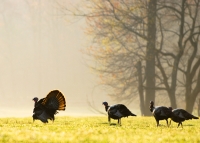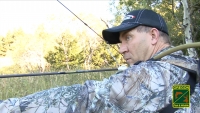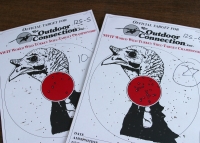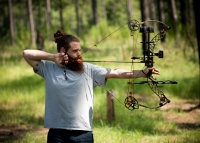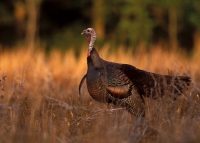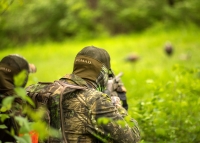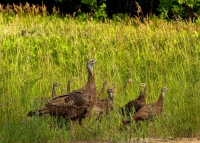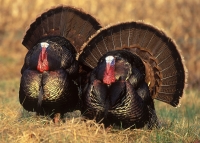
Fall turkey hunting
Patterning fall turkeys
In the spring, hunters try to take advantage of a tom’s predicted behavior during breeding season to bag a bird. In the fall, hunters fill their turkey tags by studying food sources and the daily routine of birds.
Turkeys follow food sources
As fall progresses, food sources for turkeys change. In late summer and early fall, turkeys largely feed on high-protein insects. Grasshoppers are a primary food source throughout Oregon this time of year. Silk worms, caterpillars, spiders and other bugs make up a good part of a turkey’s fall diet.
As fall leads to winter, earthworms and a variety of dried grass and weed seeds dominate a turkey’s diet. They’ll also focus on rose hips and fruit trees like wild apple, plum and pear.
As food sources change, turkeys may move to a different area or alter their previous daily route.
Turkeys’ daily routine
When food is regularly available, turkeys establish a regular travel route from their roost to a food source. They’ll use this same route over and over for days, weeks and sometimes months. Look for this route to change as food sources change.
Study the birds in the area you want to hunt and try to figure out their routine. What time do they usually leave the roost? Where are they going to feed? The more you can predict the birds’ behavior, the better your chances of finding a good place to set up and hunt.
Once you’ve patterned a flock, you can set up along their predicted path of travel and wait for feeding birds to work within shooting range.
Don't get caught looking
The key to patterning turkey behavior is to watch them from a distance, unseen. Binoculars or a spotting scope will let you observe their behavior without having to get much closer than 400 yards.
Turkey’s are easily spooked. If you spook a large flock while it's feeding, the turkeys may discover food elsewhere, and it can be quite a while before they come back to the spot you found them.
If you don’t have hours to scout and determine a flock’s routine, setting up a trail camera(s) at known a food source can reveal a lot. A well-positioned camera(s) will document precisely when birds arrive, how long they stick around, how often they return during the course of the day, and how many birds are using an area.
Hunting fall turkeys
Spring turkey hunting is about appealing to a tom’s urge to mate. Fall hunting, on the other hand, is about keying in on a flock’s daily routine.
Look for a lone bird
As fall turkey flocks become established, there’s a pecking order in each group. It’s not uncommon for a lone bird – usually a jake or young tom – to be wandering by himself looking for a flock to join. If you spot a lone bird, waste no time trying to get in front of him to set up and call.
Don’t intimidate the lone bird with aggressive calling. Instead, use soft yelps and purrs to get its attention. The sounds of a content hen feeding are common in the fall turkey woods, and sends a message that not only is food available, but it’s safe to come get it.
A two-note tom yelp can also be effective in catching the lone tom’s curiosity.
Locate a roosting flock
Another way to hunt fall turkeys is to find where they roost, just as you would in the spring. However, instead of using locator calls to get toms gobbling, just mark the spot. Be out well before daylight and get to a roost site. Move in as close as you can without spooking the turkeys. As soon as a turkey makes a sound, mimic it but with a bit more feeling. Ideally, as turkeys pitch out of the trees they’ll come right to you.
As they land, turkeys often spread out and immediately start feeding. This is a good time to use soft yelps and clucks to try and draw birds to you. These are familiar sounds to turkeys and they use them to reunite after separating during their morning flight out of the roost. This is also a good time to use a hen decoy in either an upright or feeding position.
Once you’ve figured out the flock’s somewhat predictable routine of moving between the roost and feeding areas, set up along their usual path and wait for feeding birds to work within shooting range. A popup blind will protect you from cold, wet weather, and give you a place to sit and be comfortable during a long hunting day. Occasional calling and a hen decoy can be effective here, too.
Hunting turkeys with dogs
In Oregon, fall turkey hunters are allowed to use dogs, unlike spring turkey hunters. Turkey hunting with a dog involves letting your dog break up a flock of turkeys, and then calling the birds back into shooting range using a “kee-kee” run/call.
This is a rather niche pursuit in Oregon, and relies on a well-trained dog that can stay steady and quiet as you try to call birds back into range. A good popup blind will help hide any movement you, or your dog, make.

